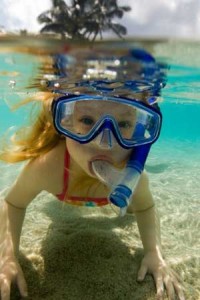 Nothing goes better with summer than soft sand and cool water. Use these tips to make sure you’re swimming in safe waters.
Nothing goes better with summer than soft sand and cool water. Use these tips to make sure you’re swimming in safe waters.
- Pick a beach that is tested regularly for cleanliness and that notifies you when it is unsafe to go in the water. Contact your local or state environmental protection office or public health agency. Oftentimes you can do an on-line search of your favorite beach’s name with the words “water quality” to find information.
- Wait at least 24 hours after a heavy rainfall before swimming. Heavy rains can stir up polluted sediment and cause sewage systems to overflow into storm drains.
- If possible, choose beaches that are away from urban areas or that have good water circulation.
- Avoid swimming in beach water that is cloudy or smells bad.
- Avoid swimming near storm drains.
- Look for trash and other forms of pollution like oil slicks.
- Check out the surrounding environment. What’s adjacent to the water? Farmland or golf courses could mean high levels of pesticides are running off into the water. If there’s an industrial facility upstream, you could be swimming in their effluent.
- Avoid getting water in your mouth.
Additional Resources:
- EPA Beaches Website
- CDC Healthy Swimming Website
- View All Healthy Child Checklists »
Leave a Reply